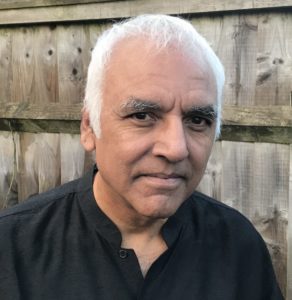Seeking clarity on defining EMDR Therapy
Getting to grips with what we mean by EMDR has occupied some of the best minds in the field for many years. Indeed at the last EMDR Europe conference, Peter Liebermann took grasped the nettle and attempted to answer this thorny question not, it seems, without some pain (see Is EMDR in danger of splitting?, ETQ, Summer 2021, Vol 3 No 3).
Now, after two years of deliberation, The Council of Scholars’ Workgroup on defining EMDR has arrived at the definition given below.
“EMDR therapy is an integrative, client-centered approach that treats problems of daily living based on disturbing life experiences that continue to have a negative impact on a person throughout the lifespan. Its Adaptive Information Processing theory hypothesizes that current difficulties are caused by disturbing memories that are inadequately processed, and that symptoms are reduced or eliminated altogether when these memories are processed to resolution using dual attention bilateral stimulation. The resolution of these targeted memories is hypothesized to result in memory reconsolidation. The standard application of EMDR therapy is comprised of eight phases and a three-pronged approach to identify and process: (a) Memories of past adverse life experiences that underlie present problems; (b) Present-day situations that elicit disturbance and maladaptive responses; and (c) Anticipatory future scenarios that require adaptive responses. There is strong empirical evidence for its use in the treatment of posttraumatic stress disorder, and it has also been found to be an effective, transdiagnostic treatment approach for a wide range of diagnoses in a variety of contexts and treatment settings with diverse populations. (Journal of EMDR Practice and Research, Volume 15, Number 4, 2021 187 What is EMDR Therapy? Past, Present, and Future Directions)”
In considering this increasingly difficult question, the Workgroup has identified three categories of EMDR therapy: EMDR Psychotherapy, EMDR Protocols and EMDR-derived Techniques. The distinctions are important. The rationale for defining these categories is that, in order to assure efficacy and consistently good practice, we need to define the essence of EMDR. What are the essential ingredients, without which, whatever you are doing is not EMDR? Clearly this is important for all concerned, therapists, health institutions and patients alike.
There is clearly a difference between working with clients in a way that treats the whole person to “addresses individual, relational and behavioural domains” and using a scripted protocol to resolve a particular presentation of past trauma to treat specific symptoms or conditions. Unlike a psychotherapy, these may be stand-alone interventions. As for EMDR-derived techniques, the Workgroup defines these as “truncated protocols and procedures that use core elements of EMDR therapy” that are used as stand-alone brief interventions or supplements to EMDR therapy. The paper gives full definitions of the three categories.
The paper goes on to consider the burgeoning lexicon of EMDR and the ensuing confusion it has generated. To quote: “In Shapiro’s 1995 text, she referred to bilateral stimulation; in the 2001 book, she changed the name to dual attention stimulation; and in 2018, she combined the two terms, using dual attention bilateral stimulation”. Clearly, this has a bearing on mechanisms for EMDR. In reviewing the available research on the matter, the Workgroup agrees with Shapiro’s 2018 view that there are probably many mechanisms. The authors of the paper append it with a useful glossary of terms.
So where do the Flash Forward (Logie & De Jongh, 2014) and Flash Technique most comfortably sit in this position paper’s three proposed categories? I asked Professor Ad de Jongh who was quite clear: “I consider the Flashforward technique as an ‘EMDR treatment protocol’ for anticipatory fear”. As for the question of bilaterality, De Jongh said that the term bilateral stimulation implies interaction of both brain hemispheres in an alternating rhythm, a theory that De Jongh claims is out of date and lacks research support. Robin Logie, who co-authored the FF paper with De Jongh says “given the definitions in the Laloitis et al paper, FF probably fits as a ‘protocol’ rather than as a ‘technique’. This is because their definition of a ‘technique’ seems to be more in relation to the Preparation phase. Although this is not often the case, FF can be used as a stand-alone Desensitization Phase procedure where some fundamental reprocessing of the core of the anxiety network is being reprocessed”.
Less clear, at least in my mind, was where Philip Manfield’s invaluable Flash Technique should sit. Manfield, however, sees FT as fitting all three categories. He explained his position clearly: “We originally taught it as integrated in “EMDR Psychotherapy” so it would be used as deeply or restrictively as one would use EMDR Psychotherapy. Just as with EMDR Psychotherapy, there is always the issue of how one intends to use Flash, whether as a technique designed to achieve a narrow result, or as a broad psychotherapy to be used in a pan diagnostic way for deep healing. On the other hand, it seems clear that it fits the other two categories. We introduced Flash as an EMDR-derived technique to use within the EMDR preparation phase but now, with eight published papers, one more in-press, one more RCT presented at EMDR Europe and quite a few other RCTs in progress, FT now evidence-based. As such, it can be used as a stand-alone and fits the description of an EMDR protocol that is particularly useful for extremely disturbing memories. As a standalone treatment (forgive me for using an undefined term), Flash is still rooted in EMDR, utilizes eight phases similar to EMDR, the three-pronged protocol, and the AIP model”.
But as the authors admit, the position paper is a starting point which, at present, leaves “on the table more questions than answers”.
References
Logie, R. D. J., & De Jongh, A. (2014). The “Flashforward procedure”: Confronting the catastrophe. Journal of EMDR Practice and Research, 8(1), 25–32




